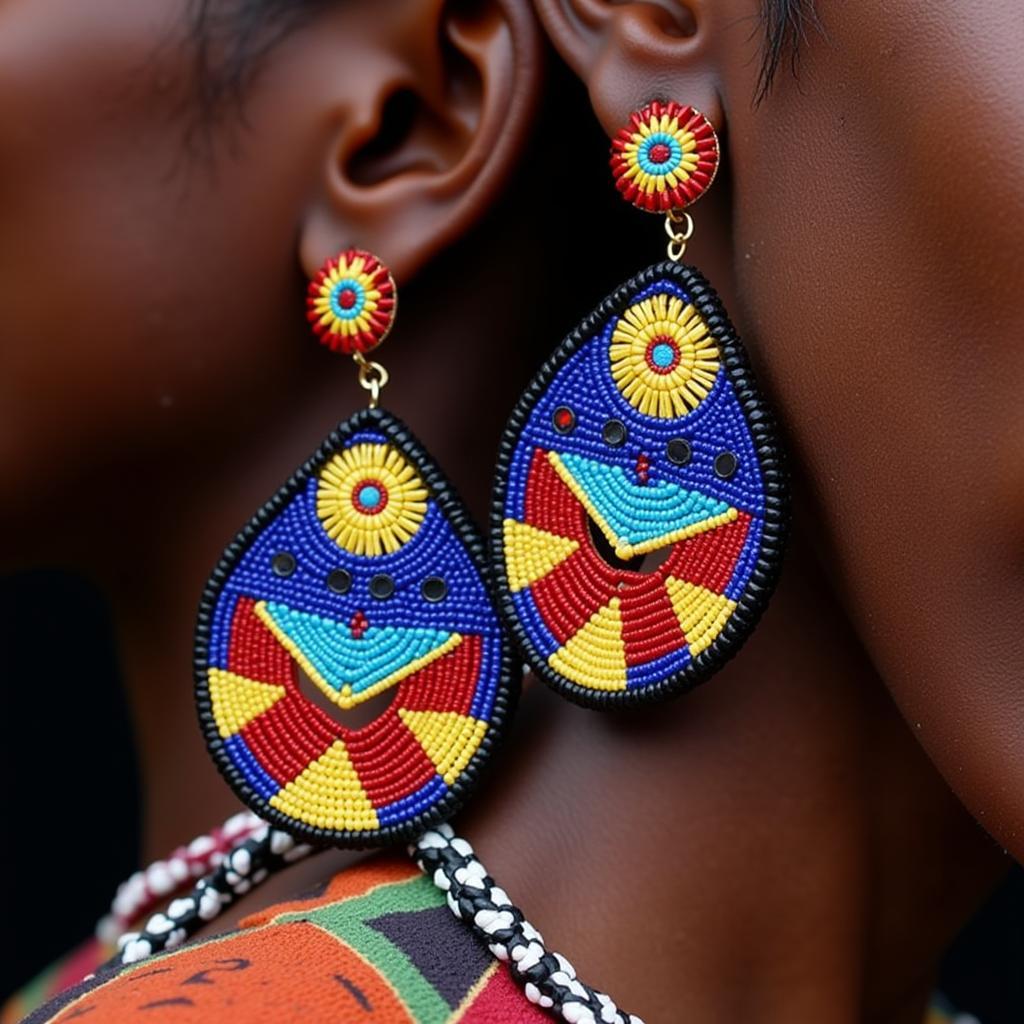Mastering African Hair Braiding Techniques
African Hair Braiding Techniques are a rich tapestry of cultural expression and artistry, passed down through generations. From intricate cornrows to flowing box braids, these styles are more than just hairstyles; they are a testament to creativity, heritage, and identity. This article will delve into the fascinating world of African hair braiding techniques, exploring their history, diverse styles, and practical tips for achieving these beautiful looks.
A Journey Through Time: The History of African Hair Braiding
African hair braiding has a long and storied history, dating back thousands of years. Braids served not only as a form of adornment but also as a way to communicate social status, ethnicity, and even marital status within communities. Different regions of Africa developed their unique braiding styles, each reflecting the specific cultural influences and traditions of the area. From the Fulani braids of West Africa to the elaborate hairstyles of the Himba people of Namibia, these techniques are a testament to the ingenuity and creativity of African cultures.
Exploring the Diverse World of African Hair Braiding Styles
The world of African hair braiding is remarkably diverse, boasting an array of styles to suit every taste and occasion. Cornrows, known for their close-to-the-scalp design, offer a versatile base for countless patterns and variations. Box braids, characterized by their square or rectangular shape, are a popular choice for their durability and protective qualities. Senegalese twists, created by twisting two strands of hair together, provide a textured and elegant look. Other popular styles include crochet braids, Ghana braids, and goddess braids, each offering its own unique aesthetic.
Achieving the Perfect Braid: Tips and Tricks
Mastering African hair braiding techniques requires patience and practice. Preparing your hair properly is essential. Clean, moisturized hair is easier to manage and braid, resulting in neater and longer-lasting styles. Using high-quality braiding hair extensions can enhance the volume and length of your braids. Practicing on a african american mannequin head with human hair can be beneficial for beginners. Remember to take breaks and avoid braiding your hair too tightly to prevent hair breakage and scalp irritation.
Aisha Nkosi, a renowned hairstylist from Johannesburg, South Africa, emphasizes the importance of proper hair care: “Healthy hair is the foundation for beautiful braids. Nourishing your hair with regular deep conditioning treatments and moisturizing products is crucial for maintaining its strength and elasticity.”
Beyond the Aesthetics: The Cultural Significance of Braids
African hair braiding techniques transcend mere aesthetics. They are deeply intertwined with cultural identity, storytelling, and community bonding. Braiding sessions often serve as social gatherings, where stories are shared and traditions are passed down through generations. The intricate patterns and styles can symbolize different meanings, reflecting social status, spiritual beliefs, or even historical events. For many Africans, braiding is more than just a hairstyle; it is a powerful expression of heritage and belonging.
Conclusion
African hair braiding techniques offer a diverse and captivating world of artistry and cultural expression. From the intricate cornrows to the flowing box braids, these styles are a testament to the rich heritage and creativity of African cultures. By understanding the history, exploring the diverse styles, and mastering the techniques, you can embark on a journey of self-discovery and celebrate the beauty of African hair braiding. You can find some inspiration by checking out african hairstylis images and exploring the history of african american hairstyles 2018. If you are in California and passionate about hair, you might consider african american cosmetology schools in california. Don’t forget to accessorize! Check out african accessories near me.
FAQ
- How long do African braids typically last?
- What are the best products to use for maintaining braids?
- How can I prevent hair breakage while braiding?
- Are there specific braiding styles suitable for different hair textures?
- What are the cultural origins of different braiding styles?
- How can I learn more about African hair braiding techniques?
- What are some tips for braiding my own hair?
More Questions?
- How can I care for my braids to make them last longer?
- What are some protective hairstyles that are similar to braiding?
For any further assistance, please contact us at: Phone: +255768904061, Email: kaka.mag@gmail.com or visit us at Mbarali DC Mawindi, Kangaga, Tanzania. We have a 24/7 customer support team.



